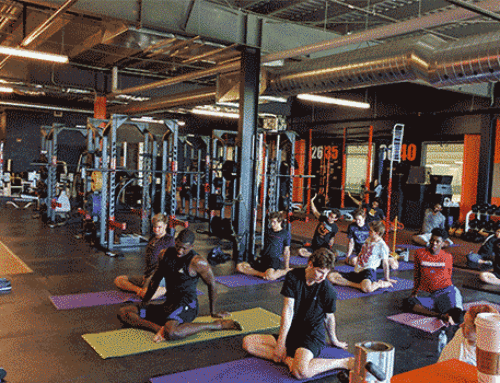The vertical jump is used in nearly all athletic combines, including those for the OHL and NHL. Although this may be true with other tests like the bench press and Wingate Anaerobic testing, neither are considered to have a strong correlation with athletic abilities. What is it that separates the vertical jump from all the other tests?
First, we need to look at the basics – your score. Why should we care how high a hockey player can jump? Hockey players will never need to jump in a game, right?

Okay, maybe never say never. But still, quite the rare occasion. However, what can we see when we test a vertical jump? It the production of power from your entire body. From a dead start, how much force can you drive into the floor? When you think about it, how many times do you only get a 1-2 to get to a loose puck? How much force must you keep on the ice while you are battling along the boards against your opponent? The truth is, hockey is full of occasions when the power developed in your legs will make the difference between a goal for or a goal against, winning the battle or coming out of the corner empty handed.
However, at FITS, your number is just the beginning. As we are a facility of Sport Scientists, we can read your body to see what kind of strategy you take as you jump. Was it an explosive jump, or did you take time to generate force? Do you use a hip-based strategy, or do you try to squat low to spring into the air? Did you fully extend while you pushed through, or did you leave some power in your jump? Did you ever think about what to do with your arms, could they help as well?

These are all important to consider. The faster an athlete can produce maximum force, the more successful they will be in their field of play. Too many players do not know how to load their hips, and instead, push from lower, less powerful muscles in their legs. We must have triple extension through our hips, knees, and ankles to make sure we have a full push in our jump. Finally, if we are all taught what to do with our arms when we run or skate, why do we not coordinate their motions through a jump?
We also to look at how you land. Did you lose your balance? Did your knees buckle together? Hopefully you were able to absorb your jump. The jump up may have been testing the concentric (muscle shortening) phase, but with the land, we can watch your eccentric (muscle lengthening) phase.
At FITS, quantitative measures are important. But it is the quality of your movement that will help prescribe the next step on your journey to greatness. We believe that movement is the key to injury prevention and to athletic power. We have the experience of bringing world class athletes to their next level. Let us do the same for you.
To your development,
David Speciale





